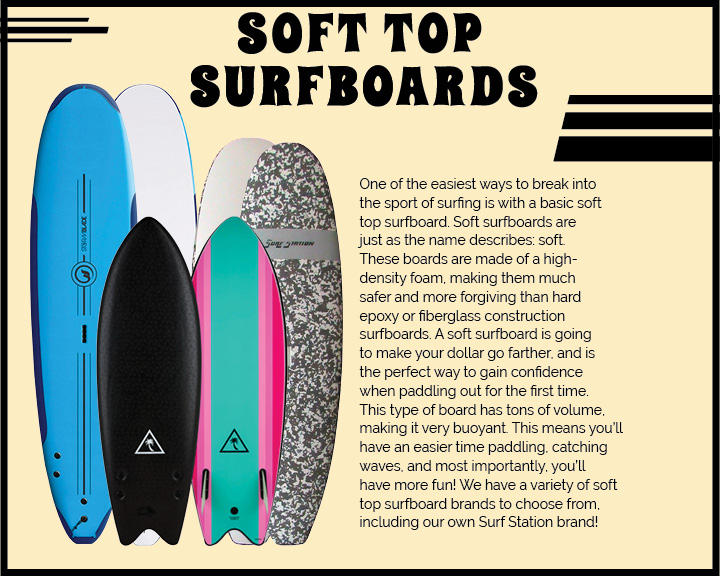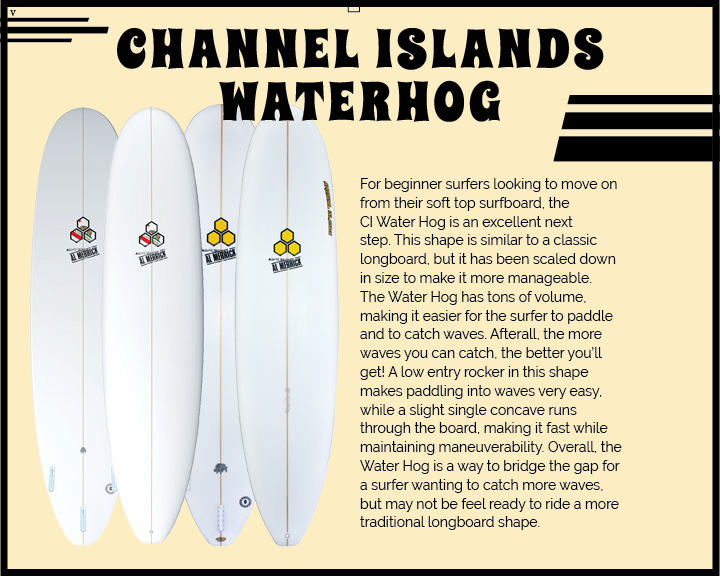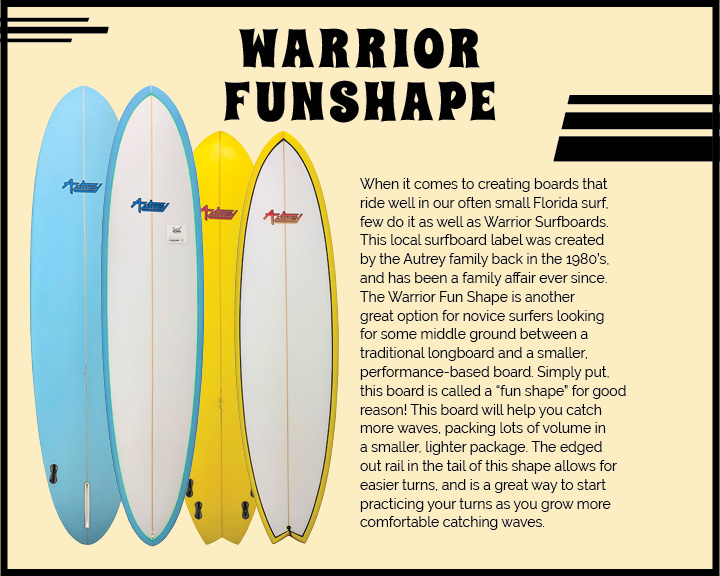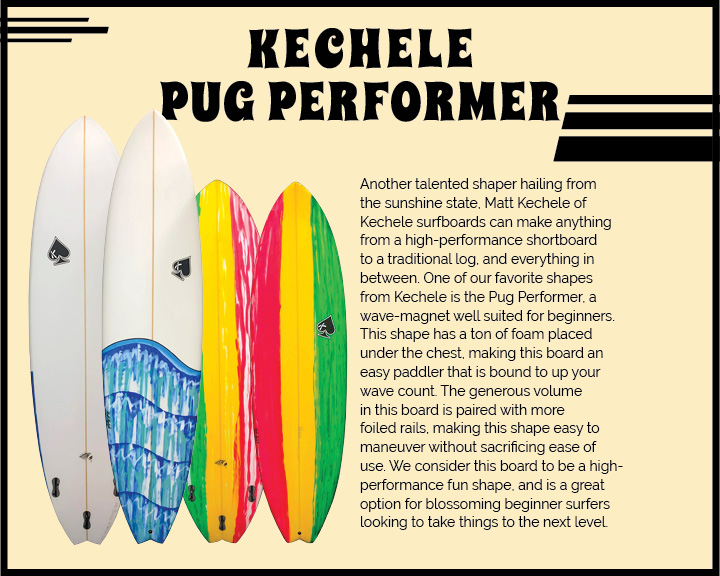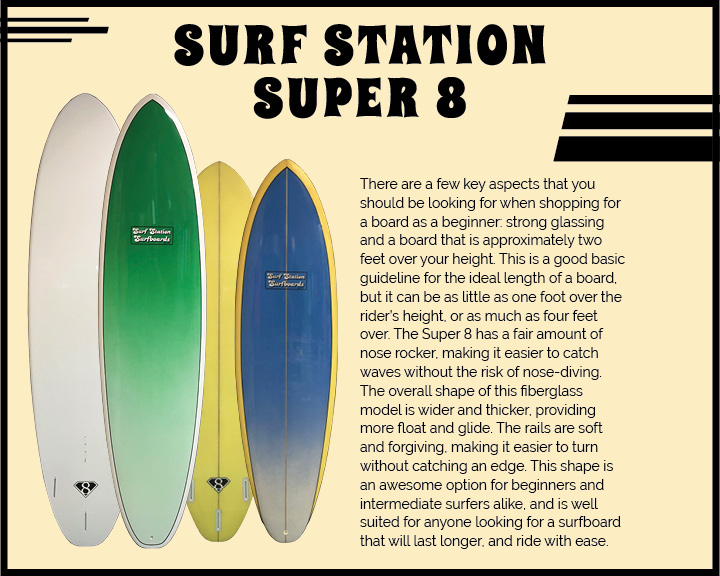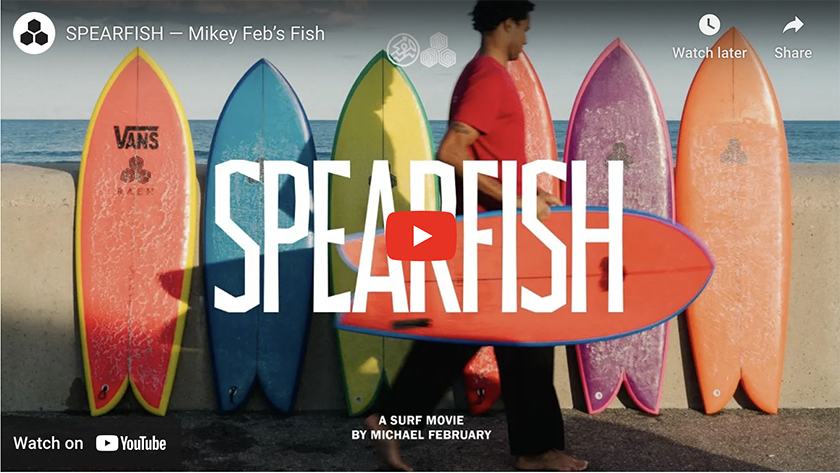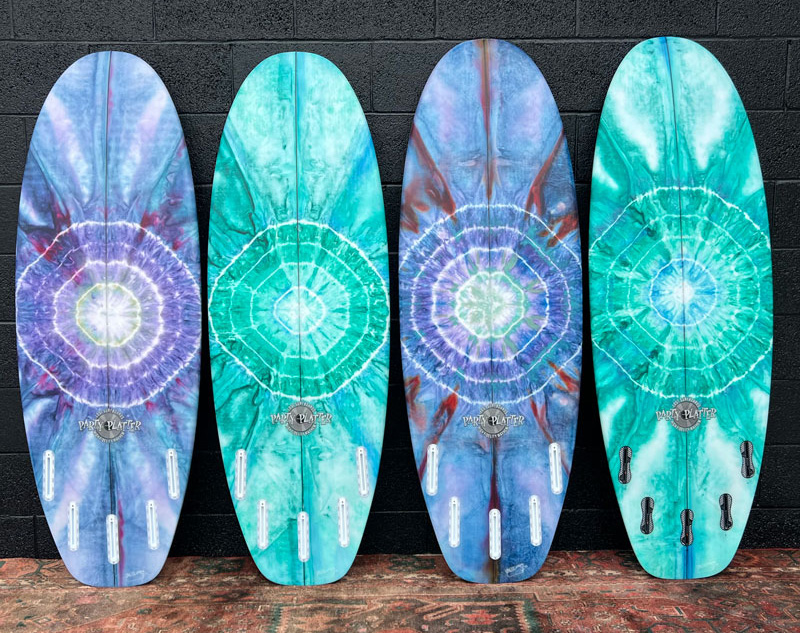Finding the Best Beginner Surfboard
When you strip the sport of surfing down to its core, there are a few basic components that make riding a wave possible. You need just a handful of things: a surfboard, a wave, and a willingness to get out there. While this may seem simple enough, anyone who has set foot into the impressive boardroom at the Surf Station knows, there are a heck of a lot of surfboards out there to choose from. In this installation of the 2020 Beginner Surfboard Buyer’s Guide, our team will detail five of the best beginner boards to get you out there and shredding this summer.
So what type of surfboard is best for a beginner surfer?
While factors like height, weight, and time spent in the water should all be considered when looking for a surfboard, there are a handful of design aspects that will help to make a board user friendly for all skill levels.
One of these factors is volume, which is the measure of the amount of space that your surfboard occupies. In other words, this measures how buoyant a surfboard is.
Boards with a higher volume offer more float and easier paddling, while boards with less volume are typically easier to turn and control. As a beginner, volume is your friend. Wider, thicker surfboards will typically have more volume, be more stable when paddling and popping up, and will catch more waves with less effort.
Another consideration when looking to buy your first surfboard is the length of the board. A good general rule of thumb when looking for the proper length board is to look for a board that is approximately two feet over your height. This is a solid guideline for the ideal length of your first board, but it can be as little as one foot over the rider’s height, or as much as four feet over. While longer boards generally catch waves easier, they can also be more difficult to maneuver.
It’s also important to consider what your surfboard is made of.
Beginner surfers are generally pretty hard on their boards, making durability of construction a priority when shopping. One option is to go the route of the classic soft surfboard. These boards are typically made of a durable, high-density foam, making them difficult to break or damage. Outside of a soft board construction, epoxy surfboards tend to be lighter and more resistant to damage.
The following collection are five boards that have been hand picked by the Surf Station team. Any of the following surfboards would make for a great first surfboard.



